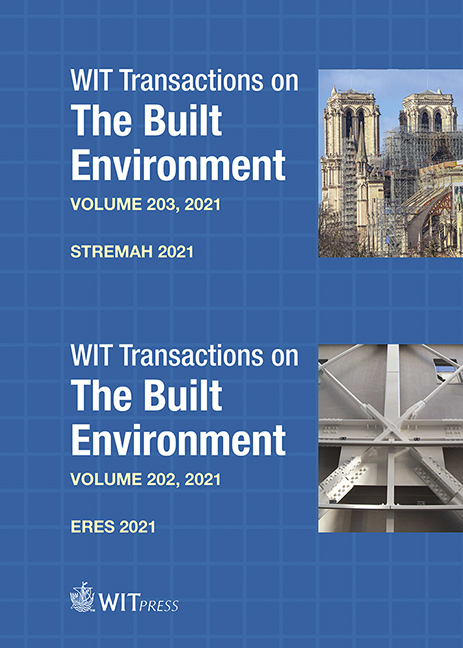BUILDING RENEWAL: THE CENTRALITY OF EVENTUAL OCCUPANCY IN DESIGN DECISIONS
Price
Free (open access)
Transaction
Volume
203
Pages
13
Page Range
15 - 27
Published
2021
Size
2,302 kb
Paper DOI
10.2495/STR210021
Copyright
Author(s)
CORDELIA O. OSASONA
Abstract
Architectural renewal, otherwise termed “adaptive re-use”, has long established its efficacy as a more effective way of justifying the continued existence of heritage structures, than mere restoration. Ile-Ife, though not particularly indicated in architectural heritage conservation in Nigeria, has its own share of such buildings worthy of conservation. Adopting a comparative case-study approach, two renewal projects in Ile-Ife are critiqued – with a view to highlighting the centrality of the role eventual tenancy played in their design proposals. In each case, an old family house was commissioned for renewal: one to be used, thereafter, only by blood relatives; the other, essentially to be let out to paying tenants. Specifically, Lokore House underwent renewal to give modern accommodation to members of an extended family; on the other hand, Agbedegbede House, was to be put up for rent (with a few rooms reserved for other extended family members). While the former was executed on a fairly liberal budget, the latter was to be “shoe-string”. In articulating the latter mandate, prime consideration was given to communal spaces being perfunctory (since not carrying a need for family-bonding); maintaining as much of the existing building as was still structurally sound; ensuring ease of circulation in common spaces and specifying rugged finishes. Inflation that set in since the Lokore House project (2018–2019) has accounted for higher prices of similar materials for the Agbedegbede one (started in 2020 and still ongoing). This notwithstanding, the major constraint of making the intervention comparatively low-budget is being met. In both cases, client and architect remained constant. Despite this (and also the fact that the end-use was still residential, and in similar cultural and physical neighbourhoods), a comparative analysis shows that it was the issue of clearly distinguishable variance in eventual occupancy that dominated design decisions.
Keywords
Lokore, adaptive re-use, Agbedegbede, tenancy, building renewal




